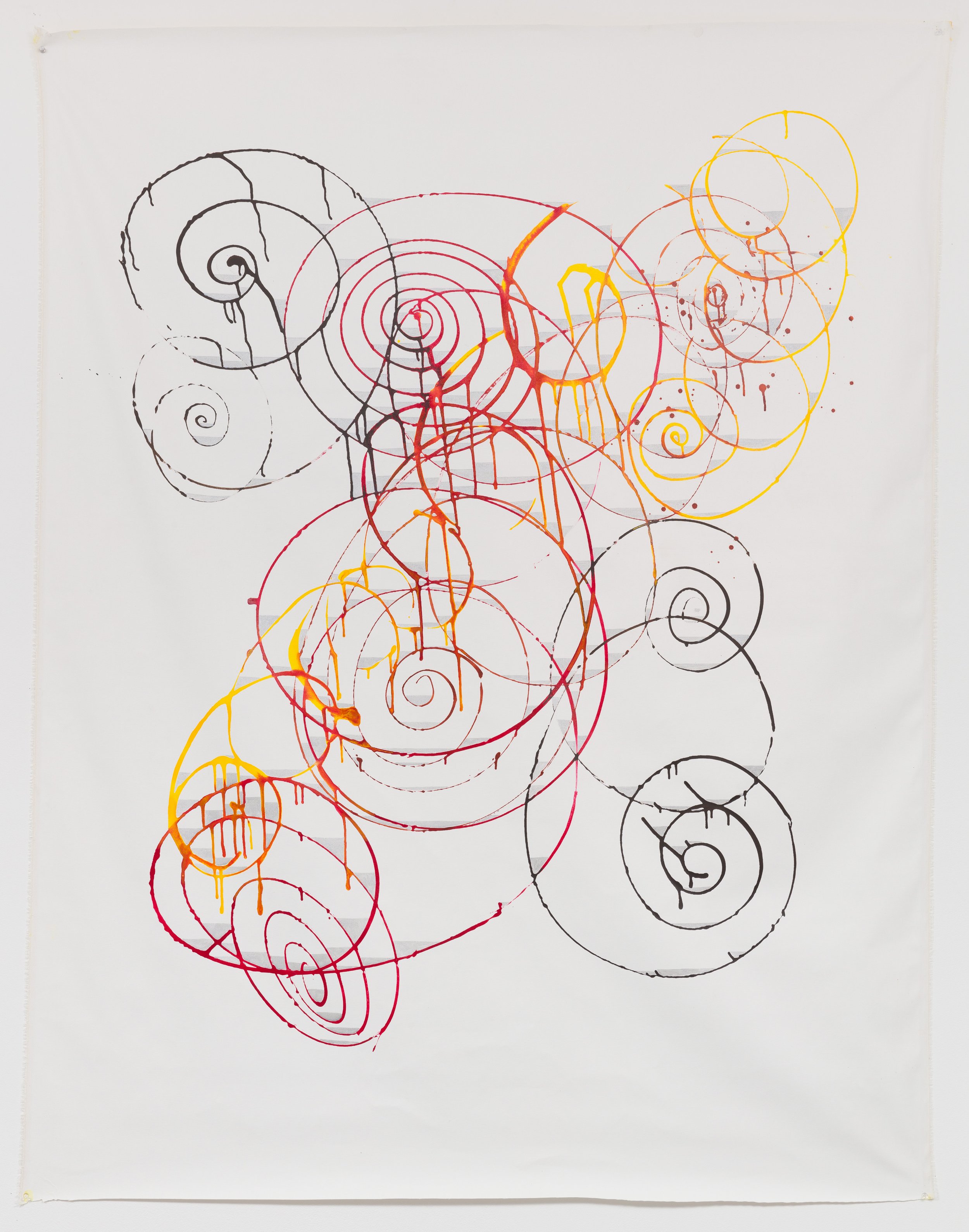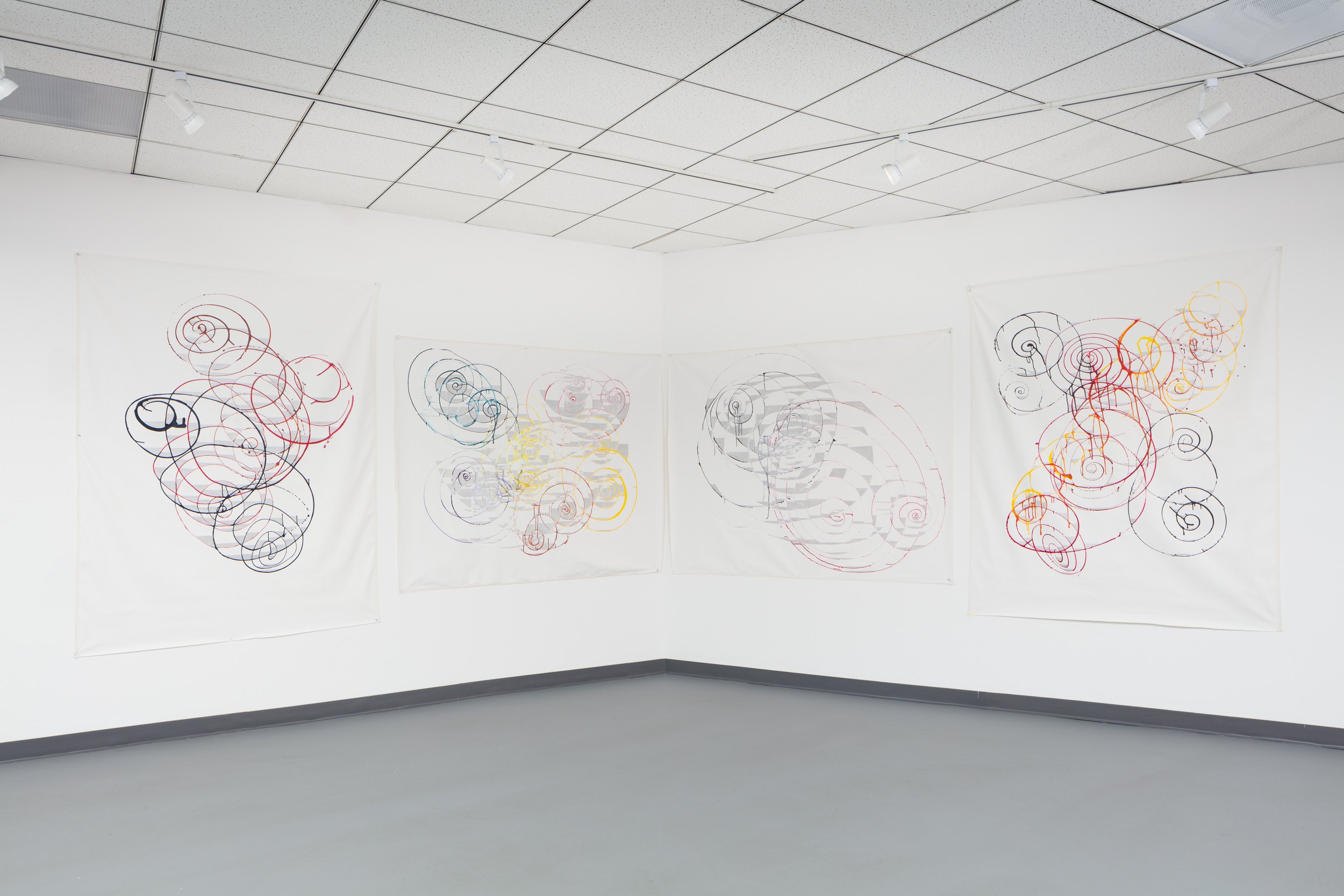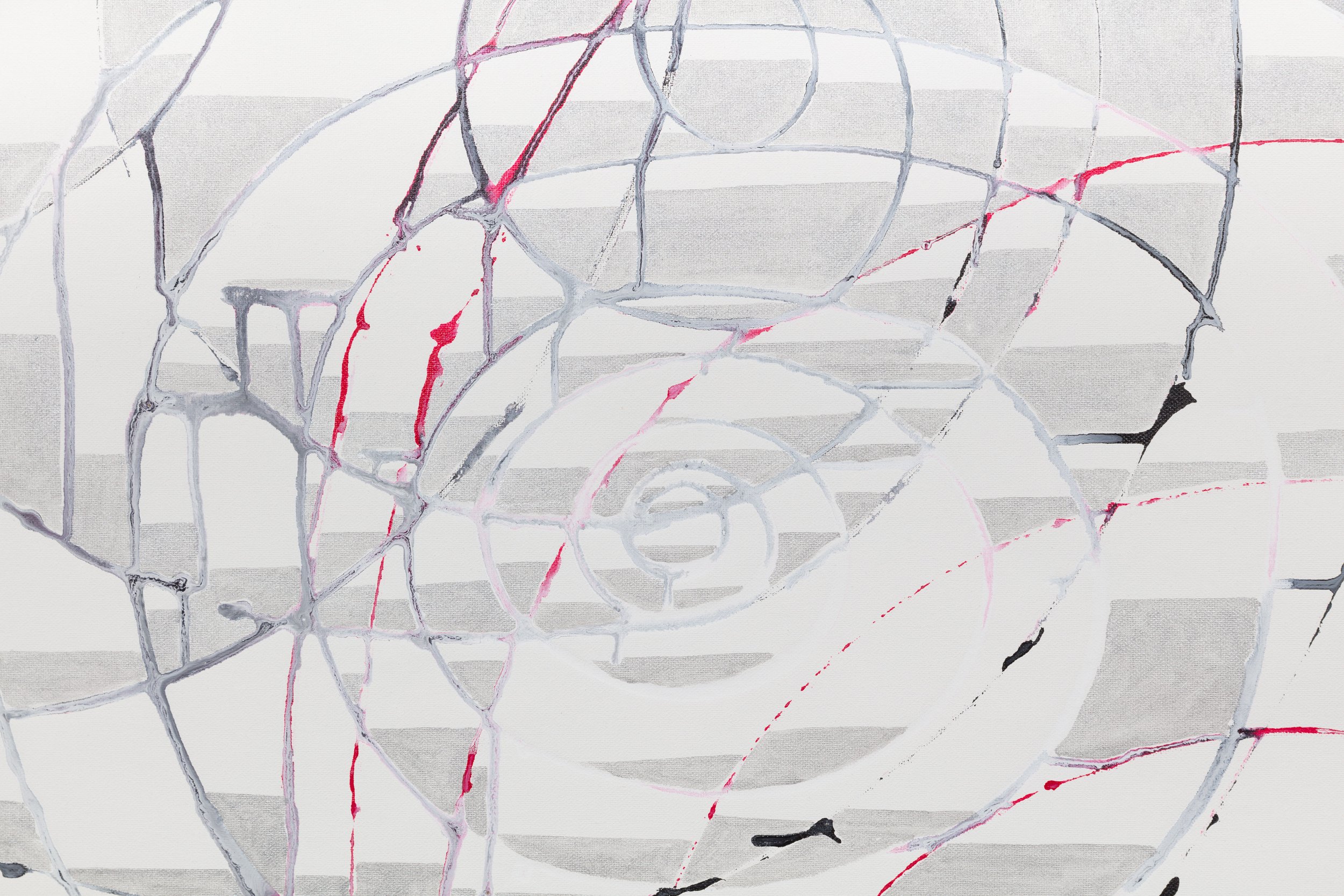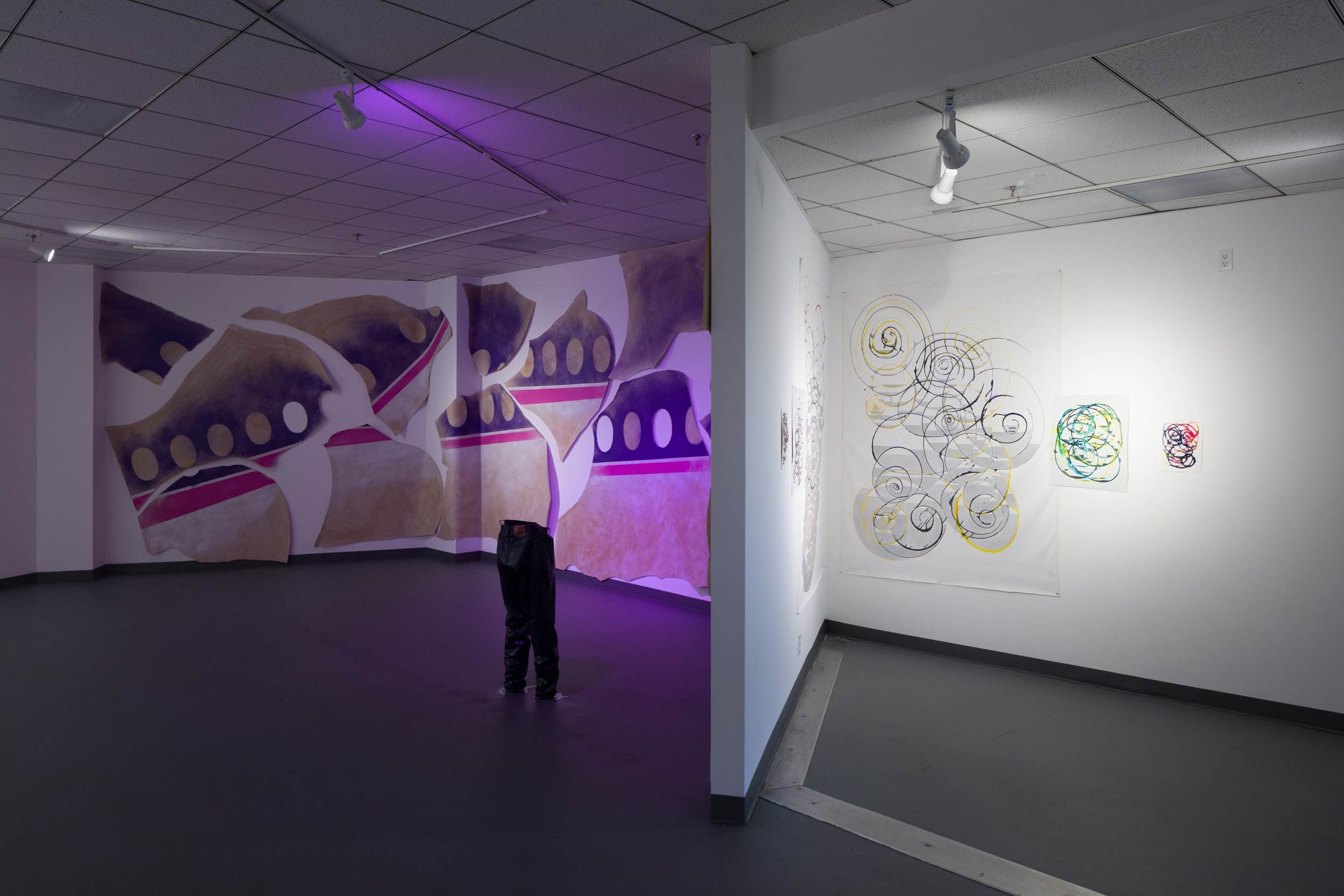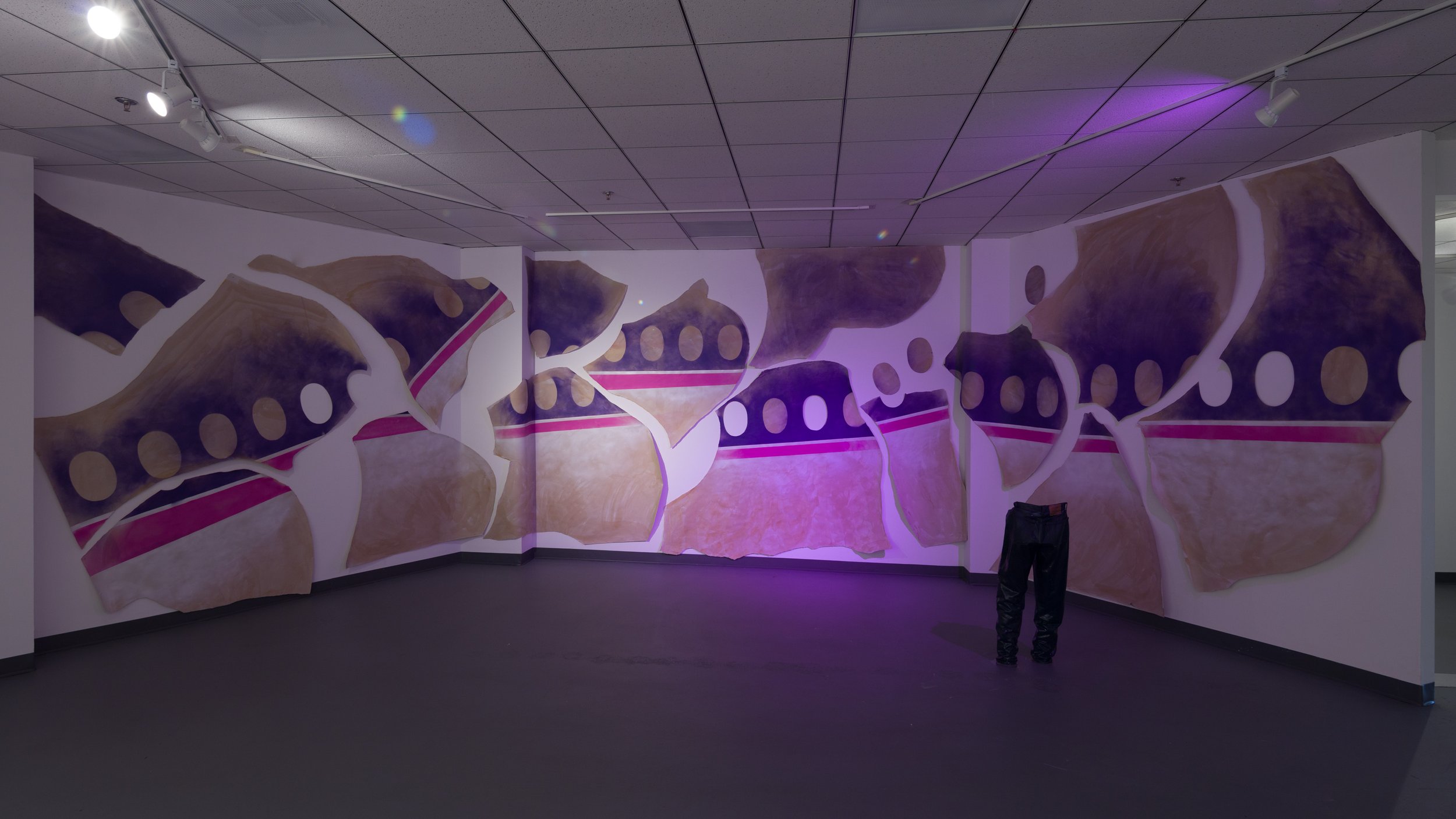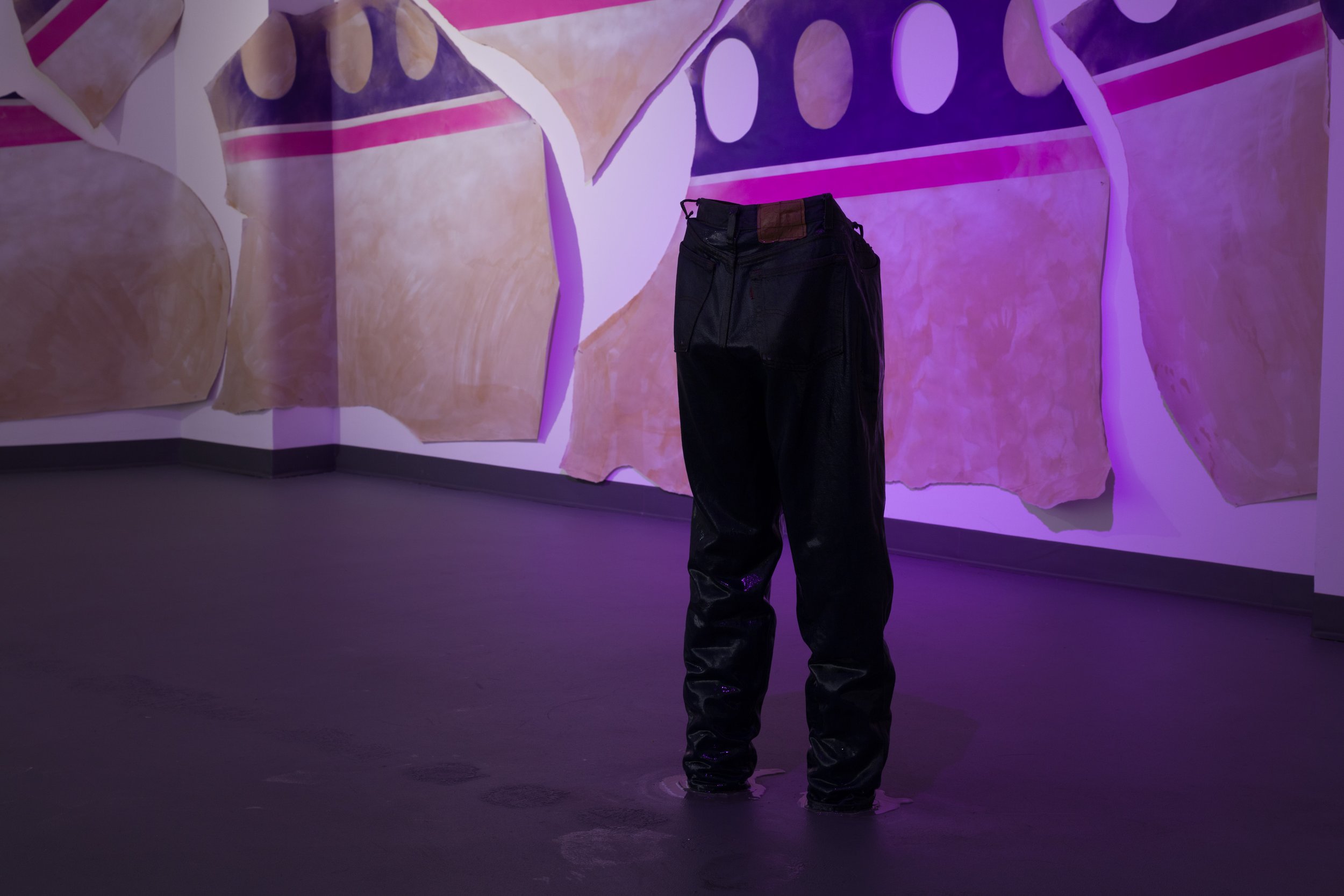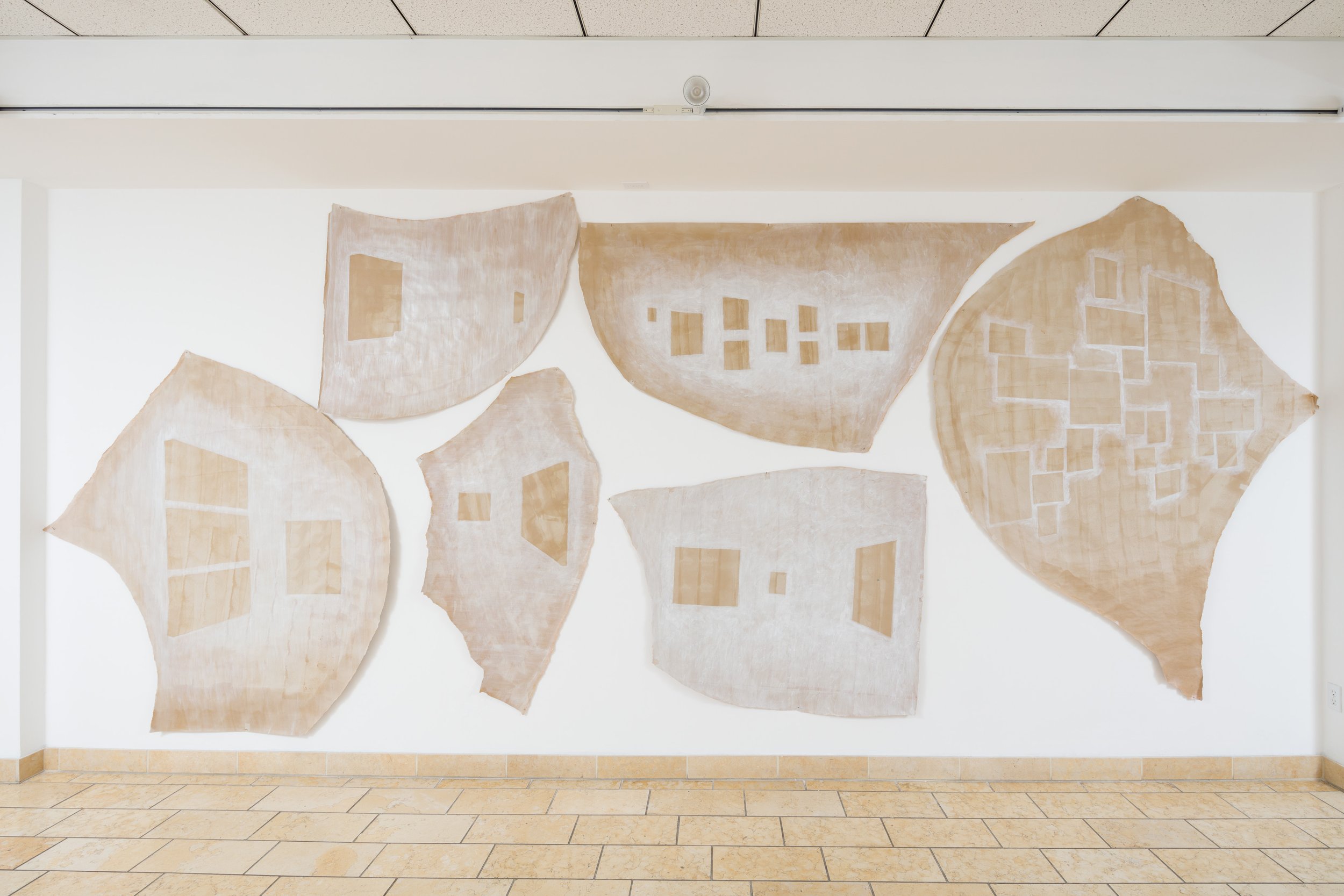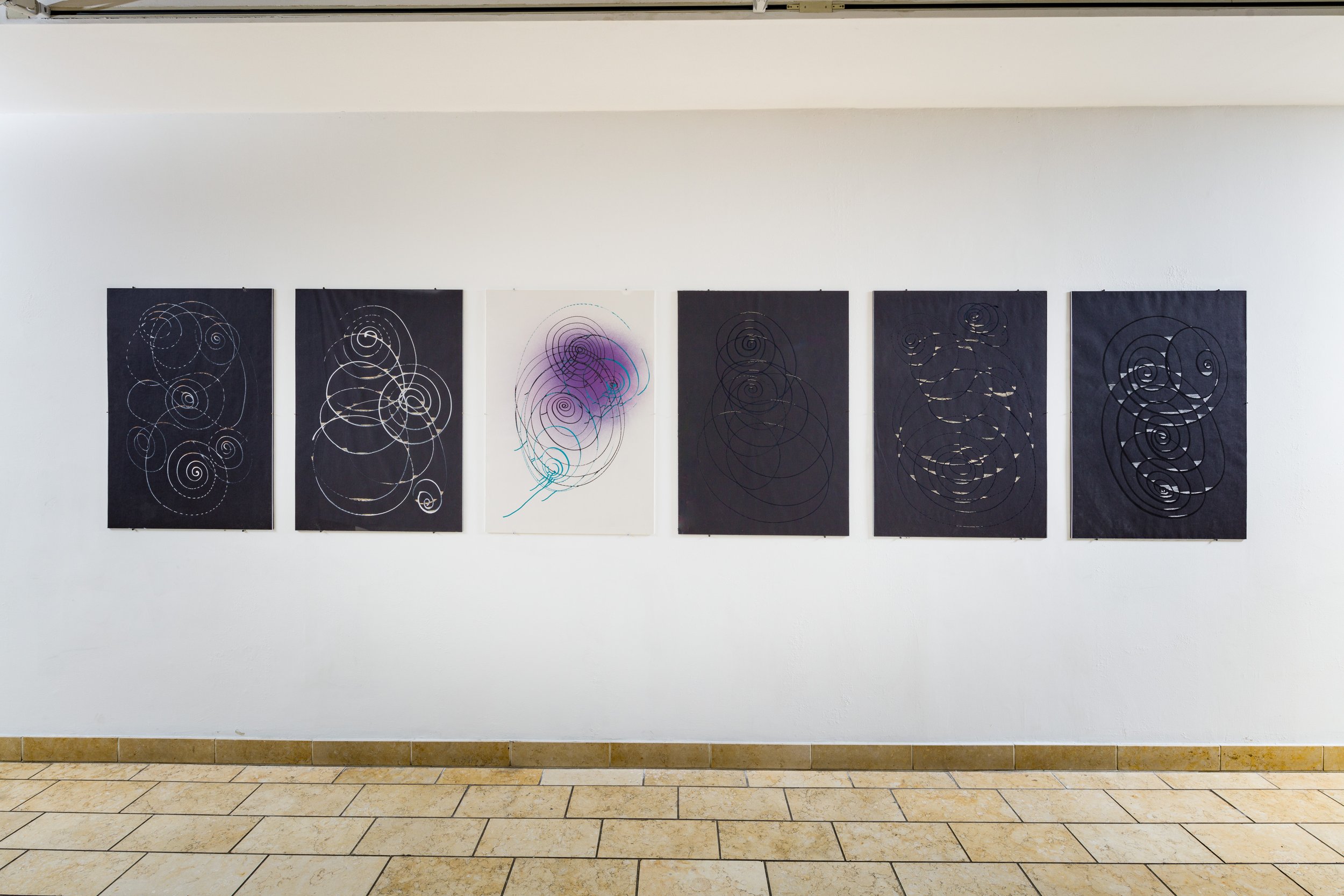Broken Cisterns (2018)
American Jewish University, Los Angeles, CA
Curators: Leah Abir and Tomer Rosenthal
Broken Cisterns is the first US solo show by Eliyahu Fatal (Eli Petel), one of the most significant artists working in Israel today. It reflects the artist’s incessant and complex interest in Jewish identity inside and outside of Israel, while exploring Judaism as a religion, an ethnicity, a culture, a nationality, an aesthetic, a doctrine, a language, and an ethical code. The works directly confront both spirituality and religion, as well as the social and personal questions that have to do with inclusion in a spiritual world.
The exhibition features paintings and installations, while also extending an invitation to visit a site-specific work at the House of the Book (the Brandeis-Bardin campus). Taking place nine years after the artist's last solo show (titled Nine in the Dark), Broken Cisterns marks the first occasion on which he is showing under the name Eliyahu Fatal – Fatal being his family’s original Iraqi-Jewish name before its encounter with and subsequent distortion by the Israeli Zionist project. The artist's act of going back to the name Fatal is a reconnection with and a reclamation of a form of Judaism distinct from nationality and of the Middle East as a point of origin and a unique culture.
The recovered name, Fatal, had been hidden thus far, and used only on the artist's passport – an identity to travel with, to test borders and reach. The name-turned-transportation-device is an expression of one of the central concepts underlying this exhibition - the transportation of objects and bodies (in Hebrew, שינוע, shinua). Geographic movement, physical and mental leaps, identity and cultural shifts are manifested not only in the imagery on display but also through artistic actions, including marking, carrying, tearing, running, and playing with different scales, trajectories, and inverse perspectives. In a wall-size paper work, 18 large-scale paper tear paintings resembling scattered parts of a purple, pink, white and brown airplane are re-arranged, piecing together what appear to be the remains of an explosion or powerful dispersal. Another work created in a similar method is "A Hole in the Wall," which abstractly traces in white acrylic paint images of world renowned painting exhibitions. Omitting all particularities, the drawn paintings are left with only their general form and become a pattern of perspective-drawn squares defined by their background, a series of absent spaces (holes in the wall).
A series of large-scale colorful drawings (Untitled (Runoffs)) follow internal rules according to which the lines, shapes and colors develop. Drawn with a calligraphic movement, the lines form substances and containers, and spillages are amassing. Another series of paper works (Untitled (Paper Runoffs)) supply a negative image to the white paintings. Here, the spillages are more graphically marked in white and gold, highlighting the calligraphic nature of the painterly gesture and alluding to a formation of a new formal or lingual system.
Another form of containment appears in a different work inhabiting the exhibition space - a pair of freestanding jeans without body. A peak into the inside of the pants reveals a small video and sound work featuring the artist reading the 613 commandments (taryag mitzvot) of the Jewish tradition while running in Tel Aviv the dark for 34 minutes. The image oscillates between low-angle shots of the running artist's face and high-angle footage of the road underneath, while his voice strenuously reads one commandment after another in a fast and rhythmic pace, flunked by heavy breathing – the heart and the lungs are struggling to maintain the oxygen flow. "You shall treat the stranger humanely; You shall fear God and not sin; You shall pray to God daily…" Thus, this work, which is titled after a children's song by Jewish poet Hayim Nahman Bialik, Ma Lemala Ma Lemata (As Above, So Below), expands on the elements of boundaries and containment. It is a trial in endurance, a series of constraints and releases, and as much as it invites a close and intimate inspection, it denies the viewer access to a frontal view. Within the exhibition, this work functions as a grounding element. It is a hyper corporal work erected in the midst of a whirlpool of swirling lines, airplane pieces and sound waves of spoken verses.
Lastly, the site-specific installation at AJU’s House of the Book is titled היהיה, which loosely translates as Could It Be. In Hebrew, it is a neologism combining present and future tenses as well as a linguistic question form and the letters indicating God’s name. The word is installed in the interior and exterior of the House of the Book through the application of dozens of plastic beads. The placement of the beads is the physical translation of a set of points in space derived from the artist's transposing of the word upon an aerial image of the site. The scale and spread of the work across the site’s topography invites the viewer into an extreme contradiction – to walk into and inhabit the space of a word without being able to read it.
Ma Lemala Ma Lemata (As Above, So Below), 2018. Video, 39 min., looped and projected inside a pair of jeans

